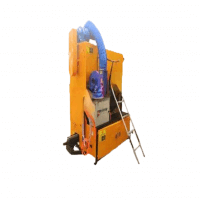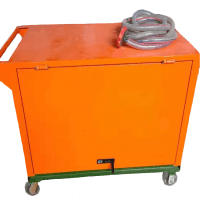Professional solutions on concrete addtives, Concrete Foaming Agent, Superplasticizer, CLC Blocks Additives, and foaming machine
(Can you pump air-entrained concrete)
What Concrete admixtures
Air entrainment is created by design. This process produces air bubbles within the concrete mix through mechanical agitation. But these are not common air bubbles that are irregular and visible to the naked eye. Air-entrained bubbles are microscopic, innumerous, and spherical. Also, they have an evenly spaced distribution. Entrained air bubbles usually maintain a distance of 0.25 mm between each other. In addition, 4% to 6% of these well-distributed air bubbles can be incorporated into cementitious mixtures. This action creates many tiny, closely spaced air bubbles in the hardened concrete. These air-entraining agents include alkali salts from resin acids, sulphonated resin acids, alkali sulphonates, alkyl sulphonates, alkylarenesulphonates, fatty acid salts, etc. One way to increase the workability of cementitious mixes is by simply adding more water. By increasing the water-to-cement ratio, the mixture becomes more fluid. But that decision comes with its problems – like the bleeding of concrete. So, it's time to improve workability with better methods. However, air-entrained concrete has a higher air content than concrete without entrained air. In this manner, the well-distributed air voids act as expansion chambers for the frozen water. Thus, the air voids within air-entrained concrete reduce the probability of microcracks. With air entrainment enabled, the air bubbles within the mixture act as a lubricant within the concrete mix. Thus, increasing the fluidity. The enhanced workability allows the mixture to be pumped and transported to its intended location within the construction site more efficiently. Air-entraining agents reduce the amount of water needed to produce a given slump. At a fixed cement content, this lowers the water-cement ratio, which reduces permeability. Although entrained air bubbles increase the void range of hardened concrete, the air voids aren't interconnected. A pro tip is to include an air-entraining agent in the concrete mix design especially when using artificial sand. Different from natural sand, artificial sand is less spherical and irregularly shaped. Applying the same principle as explained before, the entrained bubbles enhance the fluidity of a concrete mixture with manufactured sand.
Why would an engineer specify an air entrained concrete
Air-entrained concrete is more plastic and workable than non-air-entrained and can be placed and compacted with less segregation and bleeding. Hardened air-entrained concrete is far more resistant to the harmful effects of freezing, thawing, and salt scaling than ordinary concrete. Essentially, concrete comprises four materials: cement, sand, stone, and water. Water is the only liquid and the least dense of these four ingredients. Thus, water not absorbed into cement or sand tends to rise above the more dense materials of the mixture. The result is a puddle of water that "bled" to the surface of freshly poured concrete. Too much-untrained air will have serious adverse effects on the performance of the concrete, e.g., loss of strength and stickiness during finishing. Air entrainment should not be used in interior concrete that will be steel troweled, especially machine troweled. An increase in the amount of fly ash per unit of concrete will decrease the amount of entrained air. Carbon Black • The purposeful addition of carbon black as a colorant for concrete reduces the air content. In most instances, considerable amounts of additional AEA are required to attain specified air levels. Enabled by air-entraining agents, air bubbles increase the surface area water and cement need to cover. The outcome is a more balanced mixture, with less water rising to the surface of freshly placed concrete. Type I-P blocks of cement will entrain less air. Water can do amazing things for concrete, but it can also cause damage. Concrete not adequately prepared for climate variations can suffer from extreme heat and cold. In regions where negative temperatures occur, concrete needs to be able to resist the freeze-thaw cycle. Test your concrete for air content at the point of placement just before you place it.
Can you pump air-entrained concrete
The main reason air-entraining agents are added to concrete mix design is to increase its freeze-thaw resistance. The air bubbles created through air entrainment act as "expansion chambers" for water. Why does water need space to expand? Because frozen water occupies 9% more volume than water at room temperature. If air entrainment did not happen, icy water would make space for itself by creating minuscule cracks within concrete. Over time, this repeated cycle of freezing and melting of water causes micro-fractures to become large-scale problems. Thus, by simply adding air-entraining agents to the concrete mix design, the resistance to freeze-thaw can be significantly increased. Are the limits on air content commonly used (3 to 7% by volume of concrete) considered satisfactory for nearly all purposes? A. In most air-entrained concrete, values between these limits (based on total concrete volume) have been the aim.
Price of Concrete admixtures
Concrete admixtures particle size and purity will affect the product's Price, and the purchase volume can also affect the cost of Concrete admixtures. A large amount of large amount will be lower. The Price of Concrete admixtures is on our company's official website.
Concrete admixtures supplier
If you are looking for high-quality Water-based Concrete Release Agent, please feel free to contact us and send an inquiry. (sales@cabr-concrete.com). We accept payment via Credit Card, T/T, West Union, and Paypal. TRUNNANO will ship the goods to customers overseas through FedEx, DHL, by air, or by sea.
(Can you pump air-entrained concrete)








